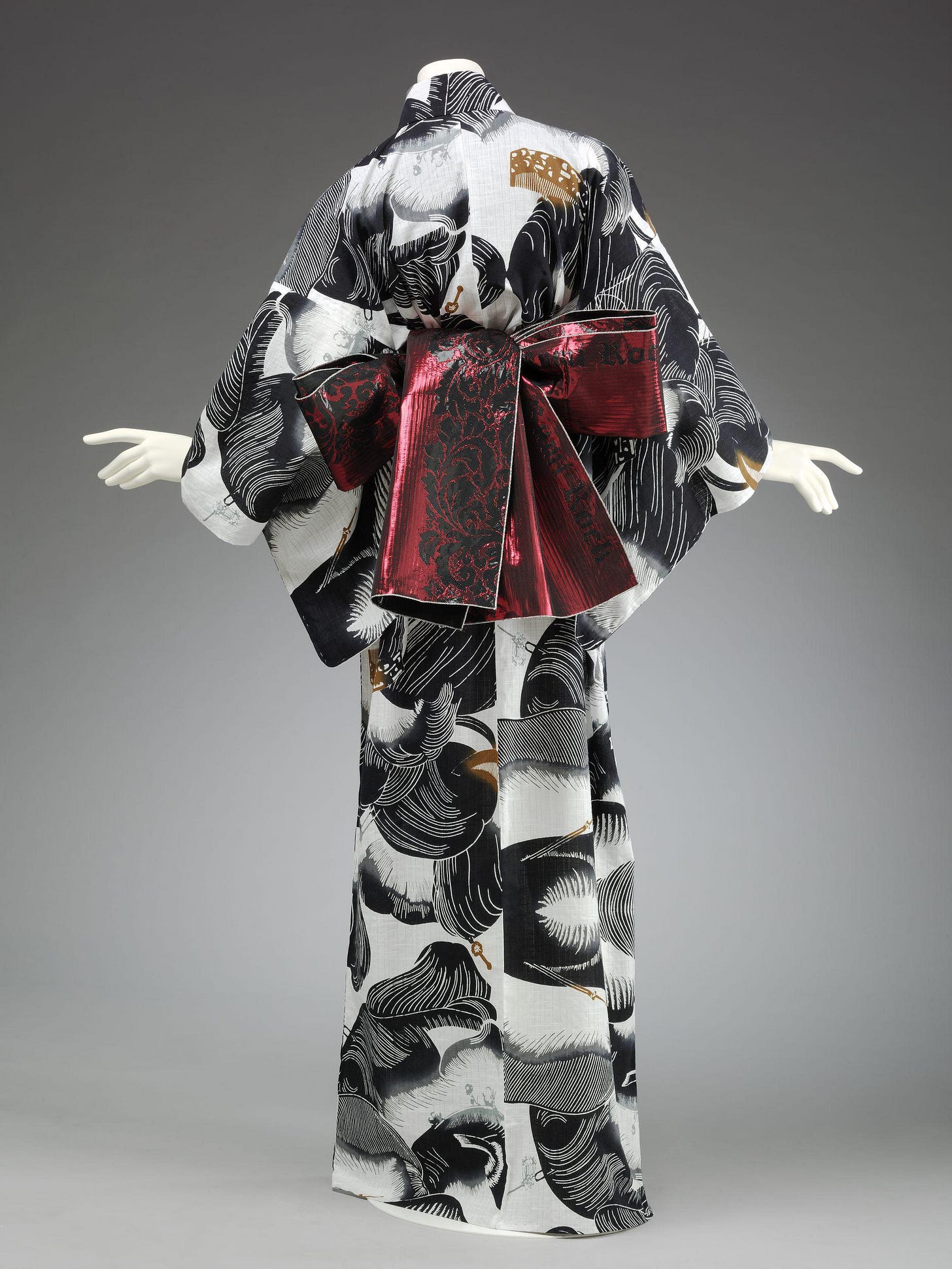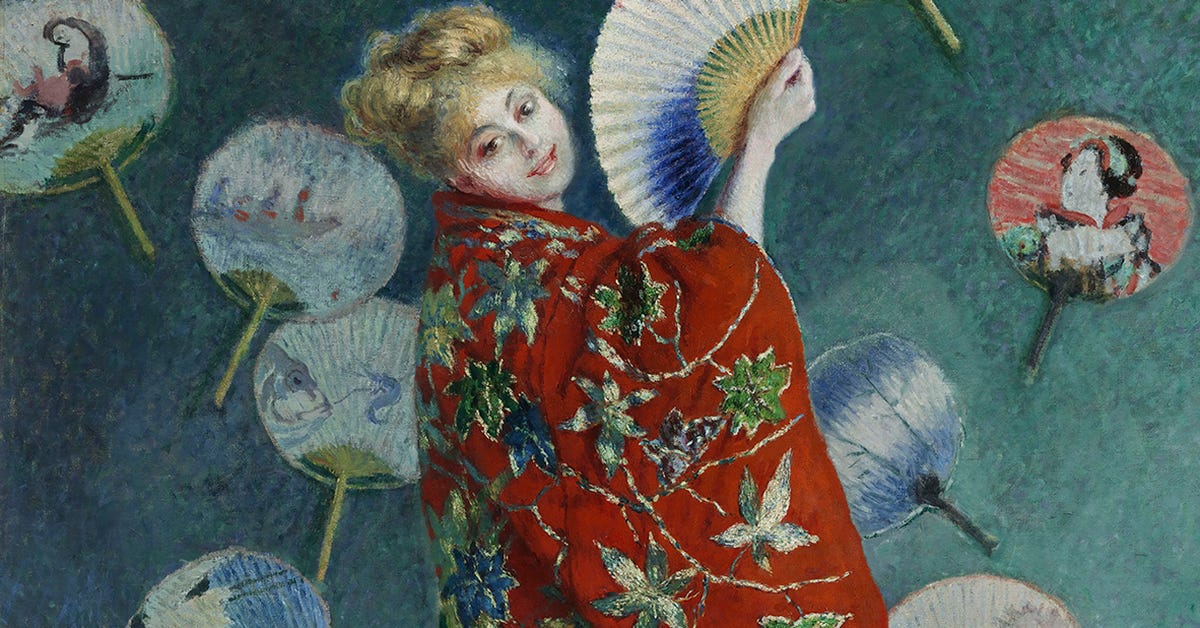What do you know about Kimono, and whose space is it anyway?
Celebrating Japanese style and the BIPOC folks carving out new spaces for themselves.
Hello everyone,
This week’s letter re-introduces you to a well-known dress item, broadens our understanding of Japanese style and highlights some of the latest folks ‘doing the work.’
But first, a little housekeeping…
We’ve reached our donation match goal!
We are excited to announce that we've raised $30,000 CDN so far from individual donations, and with the generous donation match by Anna and John Mulaney, that brings us to $57,000 CDN! Thank you!
Your support directly funds the work of our two incredible Research Assistants, Adriana and Safia, and this means that we can officially ‘green light’ and compensate many of the contributor pitches that we have received (look out for new, original essays this September)!
Our donation page remains open and we accept support all year long. Thank you so much to our generous community who send us support by donation, lovely emails, or comments here. We can't thank you enough!
Objects That Matter: The Kimono
The Kimono, which literally translates to “thing to wear” in English, is recognized worldwide as the national dress of Japan. It is a fashion that is often perceived as timeless and unchanging, reflecting an outsider’s judgment of Japanese values. However, this false notion denies the rich history of the Kimono which fosters identity, innovation and artistry.
This week, Research Assistants Safia Sheikh and Adriana Hill were on a roll, uploading numerous sources (and growing) related to East Asian culture. In addition, Adriana decided to do her latest OTM on the Kimono, and she had plenty of ‘appropriation and influence’ examples to list beneath the object’s history. A dynamic dress item that shatters notions of ‘frozen costume,’ let Adriana introduce you to the Kimono–its significance and its perennial appropriation.

Rumi Rock. Summer Kimono (yukata), 2018. Cotton with stencil-dyed decoration. Victoria and Albert Museum, FE.2-2019. CC-BY (Photo: Victoria and Albert Museum, London).
Is there an object you’d like to write about and add to our growing canon of marginalized or mis-appropriated fashion? Pitch the object via our contributor page.
The Library: Japanese Style
Our Library provides an ever-expanding collection of resources on ‘race,’ with its ideological and aesthetic influence shaping both history and our modern lives.
Notably, the construct of race complicates our understanding of nationhood, ethnicity and culture, which is highlighted as we look at ‘Japanese-ness’ and Japanese style. A robust, critical discourse on Japanese dress, costume and style has been underway for well over a decade as concepts of ‘tradition,’ ‘modernity’ and material culture ownership have been brought to the fore.
There are arguments that Japanese style is not a monolith, that Japanese dress should not be relegated as ‘static’ costume and that Japanese culture should not be appropriated without careful study or consideration (Kim Kardashian, we’re looking at you).

La Japonaise (Camille Monet in Japanese Costume) by Claude Monet / Courtesy of the Museum of Fine Arts, Boston.
So! Let’s research Japanese style together. Here’s a few items from our shelf to get us started (listed above):
Japanese Fashion Cultures: Dress and Gender in Contemporary Japan by Masafumi Monden (book)
‘The “Kimono Wednesday” Protests: Identity Politics and How the Kimono Became More Than Japanese’ by Julie Valk (scholarly article)
The Social Life of Kimono: Japanese Fashion, Past and Present by Sheila Cliffe (book)
‘Fashion, Identity, and Power in Modern Asia: Modernization of Dresses and Cultural Cross-dressing’ by Kyunghee Pyun (lecture based on book)
Japan beyond the Kimono: Innovation and Tradition in the Kyoto Textile Industry by Jenny Hall (book)
We add new sources weekly, so head over to The Library for a full spectrum of books, articles, videos and podcast episodes that further address this topic.
The Directory: Creating Spaces and Solutions
Our Directory provides an expanding collection of individuals, organizations and projects truly ‘doing the work.’ This week we’d like to introduce you to a few people who are carving out spaces for themselves and providing solutions (and not asking for permission or waiting for change).

Photo: Jerrilyn Lanier leading one of her ‘Bridging the Gap’ workshops to theatre students and professionals.
Bridging the Gap: A Look into African American Hair and Makeup for Theatre – ‘Bridging the Gap’ is a series of workshops by Jerrilyn Lanier that addresses tools, products and problems that performers of color face in the theater industry.
Public Service – Public Service is a platform dedicated to advancing equity in image-making. They have also created an open-access Talent Directory that amplifies and elevates creatives of color.
Rememory Directory – Rememory is a growing directory of creatives which highlights work and experiences of black women and non-binary people of the African Diaspora doing the work needed to claim their narratives, gazes and legacies in the global media.
Black in Fashion Council – The Black in Fashion Council is a group of editors, models, stylists, media executives, assistants, freelance creatives and industry stakeholders whose aim is to build a new foundation for inclusivity in the fashion industry.
See you next week! Yours in service and solidarity,
The Project Team
(Kim, Rachel, Adriana, Safia)



